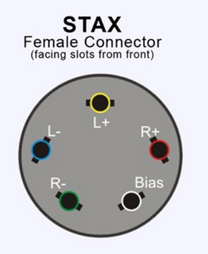Where do I even start. So I am not the most technically knowledgeable person, so I am coming across several difficulties with the new field of electrostatic headphones - it is not as simple as it is with dynamic drivers, where you have an amp/dac combo and it’s no more complicated than plugging the headphones in and that’s it.
Since I have multiple questions, observations, and concerns, I will number them so it is easier for anybody to help me out and answer specific questions. Warning ahead - the questions are very long and are very specific, I tried my best to get my point across, I am not the most advanced in technical terminology, so please feel free for further explanations. While the questions are long and specific, they don’t necessarily require long answers.
Here is some info: I have an electrostatic driver unit, no it is not a Stax, and neither can I reveal (yet) what brand it is. As far as I am aware, the most important specification is:
Maximum Input Voltage - 12V RMS
Maximum Output Voltage - 600V RMS
Bias Voltage - 580V
So, the questions:
- What I have done first was I connected the driver unit (using speaker cables and binding posts on the driver unit and the A/V receiver) to the A/V receiver, which I used as an amplifier. The A/V receiver had a CD player connected, and I had everything set up - the driver unit and the A/V receiver were connected, the electrostatic headphones were connected to the driver unit, the CD was connected to the A/V receiver.
So, I turned the A/V receiver and the CD Player on, played a CD, and I turned up the volume on the A/V receiver.
However. I forgot to turn on the electrostatic driver unit on. What is weird is that even though I didn’t turn it on, I could still hear the music on my electrostatic headphones. Later when I did turn the electrostatic unit on, I don’t remember noticing a difference. Needless to say, the sound quality had noise and some crackling and occasional channel imbalance, thus I will not be using it as an amplifier for the driver unit and the headphones.
Now, the question is whether there is a chance that I damaged the headphones or the driver unit due to the fact that I was playing music and had everything connected, but didn’t turn on the driver unit. And why could the headphones work and play music even though the driver unit was not turned on? The driver unit was connected to the A/V receiver but it wasn’t turned on with its own power switch.
- When I got the driver unit, I plugged in my other pair of electrostats that use Stax’s 5-pin PRO Bias termination. Well, when I did plug them in, only one channel was working. What happened is that the driver unit wasn’t wired correctly. The driver unit had “Bias” soldered to the wrong “pin” on the socket - it was soldered to the “isolated” pin, the pin that is supposed to be “L+” on the Stax 5-pin Pro Bias termination.
Basically the driver unit had “Bias” wired to where Stax has “L+”.
Could this have damaged the headphones? The headphones were playing music through this wrongly soldered pin layout for less than 10 minutes. Later I fixed this by soldering the “Bias” to the correct pin/socket.
Just to clarify, it wasn’t the headphone’s plug that had been wrongly wired, but rather the socket on the driver unit.
- While the electrostatic headphone was plugged into the amplifier (this was a dedicated amplifier that was like an all in one solution and could drive electrostatic headphones), it was unplugged on the headphone end several times while the music was still playing (the cable stayed plugged in on the amplifier end, and it was then plugged into a different headphone while it was still playing music). It was not me who was doing this, but the person whose amplifier and headphones I was testing.
Now, again, could this have damaged the headphones? It’s not as though both ends/channels were unplugged at the same time, which means that while one of the channels was unplugged, the other was working , and while one was being plugged in, it was the one which was playing music (essentially one channel was playing/not playing music for a short period of time before the other channel was plugged/unplugged). Are there any concerns regarding this?
I would never do it like that and I always make sure that the headphones are unplugged from the source and there is no music playing, that’s why this was very odd to me and it rose some concerns.
Just to clarify, the electrostatic headphone driver unit has nothing else except a power on/off switch. Inside of it there are two large transformers that connect to the two 3-pin XLR outputs and a single 5-pin PRO Bias connectors. This driver unit requires an amplifier so it can drive the headphones, and of course, you adjust the volume on the amplifier.
This is about it for now. The questions are long, but they don’t specifically require long answers (unless you are willing to spend the time to explain the technical side of things and explain why it could/could not damage the headphones). Most of these things were not at my fault and weren’t done by me, I am working with a “prototype” and not everything was perfect.. some mistakes were made and I just want to make sure that they didn’t damage the driver unit or the headphones. I am not even sure if I made a single question clear enough for anybody to answer… ![]()
Just a whole lot of obstacles and difficulties regarding everything.
